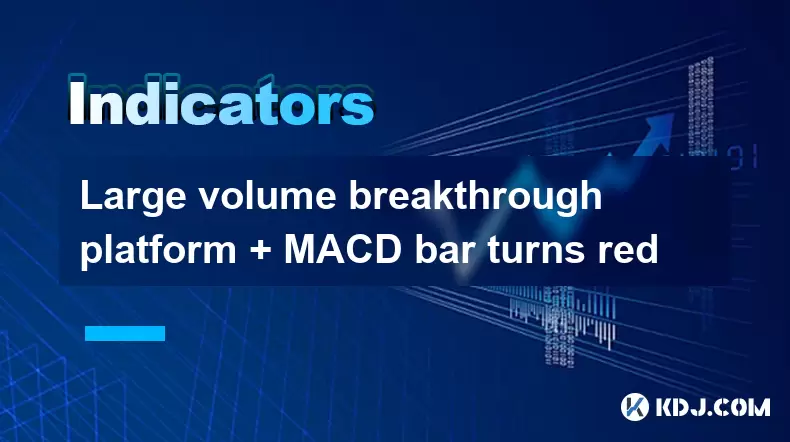-
 Bitcoin
Bitcoin $118000
0.67% -
 Ethereum
Ethereum $3750
0.71% -
 XRP
XRP $3.183
1.61% -
 Tether USDt
Tether USDt $1.000
-0.01% -
 BNB
BNB $788.1
1.21% -
 Solana
Solana $186.0
0.85% -
 USDC
USDC $0.9999
-0.02% -
 Dogecoin
Dogecoin $0.2373
1.25% -
 TRON
TRON $0.3204
1.76% -
 Cardano
Cardano $0.8266
1.85% -
 Hyperliquid
Hyperliquid $44.04
1.28% -
 Sui
Sui $4.192
5.88% -
 Stellar
Stellar $0.4399
2.63% -
 Chainlink
Chainlink $18.40
1.19% -
 Hedera
Hedera $0.2842
9.06% -
 Bitcoin Cash
Bitcoin Cash $560.5
2.46% -
 Avalanche
Avalanche $24.99
4.58% -
 Litecoin
Litecoin $114.5
1.25% -
 UNUS SED LEO
UNUS SED LEO $8.980
-0.03% -
 Shiba Inu
Shiba Inu $0.00001406
0.53% -
 Toncoin
Toncoin $3.306
4.27% -
 Ethena USDe
Ethena USDe $1.001
0.03% -
 Polkadot
Polkadot $4.169
2.37% -
 Uniswap
Uniswap $10.56
1.95% -
 Monero
Monero $322.8
1.06% -
 Dai
Dai $0.0000
0.00% -
 Bitget Token
Bitget Token $4.545
0.12% -
 Pepe
Pepe $0.00001261
1.29% -
 Aave
Aave $296.5
1.27% -
 Cronos
Cronos $0.1379
5.90%
Large volume breakthrough platform + MACD bar turns red
A large volume breakout from a consolidation platform, even with a red MACD bar, can signal a strong trend continuation if confirmed by closing price and volume.
Jul 27, 2025 at 12:35 am

Understanding the Large Volume Breakthrough Platform in Cryptocurrency Trading
In cryptocurrency trading, a large volume breakthrough platform refers to a technical formation where the price of a digital asset consolidates within a narrow range—commonly known as a "platform"—before suddenly breaking out with significantly increased trading volume. This consolidation phase typically indicates a period of indecision or balance between buyers and sellers. When the breakout occurs on high volume, it suggests strong market conviction behind the move, often signaling the beginning of a new trend. Traders closely monitor such patterns because they can offer high-probability entry opportunities.
The platform itself is identified by relatively flat price action over several candlesticks, with minimal volatility and consistent support and resistance levels. A true breakout is confirmed only when the closing price moves decisively beyond the upper boundary of this range and is accompanied by a noticeable spike in trading volume. This volume surge validates the breakout, reducing the likelihood of a false signal or "fakeout." On platforms like Binance, Bybit, or TradingView, traders use volume profile tools and candlestick analysis to spot these formations across timeframes ranging from 1-hour to daily charts.
Interpreting the MACD Bar Turning Red
The MACD (Moving Average Convergence Divergence) indicator is a momentum oscillator widely used in crypto technical analysis. It consists of two lines—the MACD line and the signal line—and a histogram (the "MACD bar") that represents the difference between them. When the MACD bar turns red, it indicates that the histogram values are decreasing and moving below the zero line, suggesting weakening bullish momentum or the emergence of bearish pressure.
However, the interpretation of a red MACD bar depends heavily on context. If the bar turns red during a large volume breakout, it may initially seem contradictory. But in some cases, especially after a sharp upward move, a slight contraction in momentum (shown by the red bar) can occur even as price continues to rise on strong volume. This could reflect profit-taking or short-term exhaustion, not necessarily a reversal. Traders should assess whether the red bar appears during the breakout candle or immediately after, and evaluate it alongside other indicators like RSI or price action patterns.
Combining Volume Breakout and MACD Signals for Entry
When both a large volume breakthrough platform and a MACD bar turning red occur simultaneously, traders must analyze the sequence and timing carefully. Consider the following scenario: price breaks out of a consolidation zone on high volume, but the MACD histogram begins to shrink and turns red during the breakout candle. This might suggest that while buyers are pushing price higher, the rate of acceleration is slowing.
To navigate this, follow these steps:
- Confirm the breakout: Ensure the price closes above the platform’s resistance with volume at least 1.5 times the 20-period average.
- Check MACD positioning: Determine whether the MACD line is still above the signal line and above zero. Even if the histogram turns red, a bullish crossover may still be intact.
- Monitor candlestick patterns: Look for bullish continuation patterns like bullish engulfing or three white soldiers after the breakout.
- Set entry points: Enter long on a retest of the broken resistance level if volume remains elevated and the MACD does not cross below the signal line.
Using TradingView, you can apply the MACD indicator and volume overlay simultaneously. Adjust the settings to default (12, 26, 9) unless backtesting suggests otherwise. Enable alerts for volume spikes and MACD histogram color changes to react promptly.
Risk Management in High-Volume Breakout Scenarios
Trading breakouts, especially those with conflicting momentum signals, carries inherent risk. A red MACD bar during a high-volume breakout could foreshadow a pullback or reversal. To protect capital, implement strict risk controls:
- Place stop-loss orders just below the breakout candle’s low or the platform’s upper boundary.
- Use position sizing to limit exposure—never risk more than 2% of your trading capital on a single trade.
- Avoid chasing the price if the breakout candle is excessively long; wait for a pullback to enter.
- Watch for divergence: If price makes a higher high but the MACD forms a lower high, it may indicate weakening momentum despite strong volume.
On exchanges like Binance Futures, you can set stop-market or stop-limit orders directly in the order panel. For spot trading, use conditional orders if available. Always verify that your order type matches your strategy to avoid slippage during volatile moves.
Backtesting the Strategy on Historical Data
To validate the effectiveness of combining a large volume breakthrough platform with a MACD bar turning red, backtesting on historical cryptocurrency data is essential. Use TradingView’s strategy tester or Python libraries like ccxt and pandas to automate the process.
Steps to perform backtesting:
- Download historical price and volume data for assets like BTC/USDT or ETH/USDT from APIs such as Binance or CoinGecko.
- Define the platform: Identify periods where price moves within a 3–5% range for at least 6–8 candles.
- Detect breakouts: Flag instances where price closes above the range with volume exceeding the 20-period average by 50%.
- Analyze MACD: Record whether the histogram turns red on the breakout candle or the next.
- Track outcomes: Measure price movement 3–5 candles after entry to assess win rate and average return.
Visualize results using candlestick charts with MACD and volume overlays. Filter out low-liquidity periods to avoid false signals. Adjust parameters incrementally to optimize performance without overfitting.
Frequently Asked Questions
Can a red MACD bar still be bullish?
Yes. A red MACD bar indicates the histogram is shrinking, not necessarily that the trend is bearish. If the MACD line remains above the signal line and above zero, the underlying trend can still be upward. This often reflects a pause in momentum rather than a reversal.
How do I confirm a genuine volume spike on breakout?
Compare the breakout candle’s volume to the average volume of the previous 10–20 candles. A genuine spike typically exceeds 1.5x the average. Use volume profile tools to ensure the surge aligns with the breakout direction.
Should I trade the breakout if the MACD bar turns red immediately after entry?
Not automatically. Wait for confirmation. If price continues to rise and closes higher over the next 1–2 candles despite the red bar, the breakout may still be valid. Exit only if price drops below the breakout level or MACD lines cross bearishly.
What timeframes work best for this setup?
The 4-hour and daily charts provide the most reliable signals due to reduced noise. Lower timeframes like 15-minute are prone to false breakouts and whipsaws, especially in low-cap altcoins. Focus on major pairs with high liquidity.
Disclaimer:info@kdj.com
The information provided is not trading advice. kdj.com does not assume any responsibility for any investments made based on the information provided in this article. Cryptocurrencies are highly volatile and it is highly recommended that you invest with caution after thorough research!
If you believe that the content used on this website infringes your copyright, please contact us immediately (info@kdj.com) and we will delete it promptly.
- Meme Coins in July 2025: Bitcoin Takes a Backseat?
- 2025-07-27 10:30:12
- HIFI Price Eyes Breakout: Downtrend Line in the Crosshairs?
- 2025-07-27 10:30:12
- Troller Cat's Meme Economy Prowess: Presale ROI and Viral Domination
- 2025-07-27 10:50:12
- Bitcoin Price Tumble: Chart Patterns Point Downward?
- 2025-07-27 10:50:12
- Ethereum's Bullish Case: Flag Pattern Points to $4,800?
- 2025-07-27 11:10:18
- Ethena (ENA) & Anchorage Digital: A Genius Partnership Sparking a Stablecoin Revolution
- 2025-07-27 11:10:18
Related knowledge

What signal does the ROC send when it rises rapidly from a low level and breaks through the zero axis?
Jul 27,2025 at 10:15am
Understanding the Rate of Change (ROC) IndicatorThe Rate of Change (ROC) is a momentum-based oscillator used in technical analysis to measure the perc...

What does it mean that the rebound is blocked after the moving average is arranged in a short position for the first time?
Jul 26,2025 at 10:51am
Understanding the Short-Term Moving Average ConfigurationWhen traders refer to a 'short position arrangement' in moving averages, they are describing ...

What does it mean that the parabolic indicator and the price break through the previous high at the same time?
Jul 26,2025 at 07:22pm
Understanding the Parabolic Indicator (SAR)The Parabolic SAR (Stop and Reverse) is a technical analysis tool developed by J. Welles Wilder to identify...

What does it mean that the price falls below the short-term moving average after the RSI top divergence?
Jul 26,2025 at 11:01pm
Understanding RSI Top Divergence in Cryptocurrency TradingThe Relative Strength Index (RSI) is a momentum oscillator widely used in cryptocurrency tra...

What does it mean when the moving average is arranged in a bullish pattern but the MACD bar is shortened?
Jul 27,2025 at 06:07am
Understanding the Bullish Moving Average PatternWhen traders observe a bullish moving average pattern, they typically refer to a configuration where s...

What does it mean when the price rises along the 5-day moving average for five consecutive days?
Jul 26,2025 at 08:07am
Understanding the 5-Day Moving Average in Cryptocurrency TradingThe 5-day moving average (5DMA) is a widely used technical indicator in cryptocurrency...

What signal does the ROC send when it rises rapidly from a low level and breaks through the zero axis?
Jul 27,2025 at 10:15am
Understanding the Rate of Change (ROC) IndicatorThe Rate of Change (ROC) is a momentum-based oscillator used in technical analysis to measure the perc...

What does it mean that the rebound is blocked after the moving average is arranged in a short position for the first time?
Jul 26,2025 at 10:51am
Understanding the Short-Term Moving Average ConfigurationWhen traders refer to a 'short position arrangement' in moving averages, they are describing ...

What does it mean that the parabolic indicator and the price break through the previous high at the same time?
Jul 26,2025 at 07:22pm
Understanding the Parabolic Indicator (SAR)The Parabolic SAR (Stop and Reverse) is a technical analysis tool developed by J. Welles Wilder to identify...

What does it mean that the price falls below the short-term moving average after the RSI top divergence?
Jul 26,2025 at 11:01pm
Understanding RSI Top Divergence in Cryptocurrency TradingThe Relative Strength Index (RSI) is a momentum oscillator widely used in cryptocurrency tra...

What does it mean when the moving average is arranged in a bullish pattern but the MACD bar is shortened?
Jul 27,2025 at 06:07am
Understanding the Bullish Moving Average PatternWhen traders observe a bullish moving average pattern, they typically refer to a configuration where s...

What does it mean when the price rises along the 5-day moving average for five consecutive days?
Jul 26,2025 at 08:07am
Understanding the 5-Day Moving Average in Cryptocurrency TradingThe 5-day moving average (5DMA) is a widely used technical indicator in cryptocurrency...
See all articles

























































































